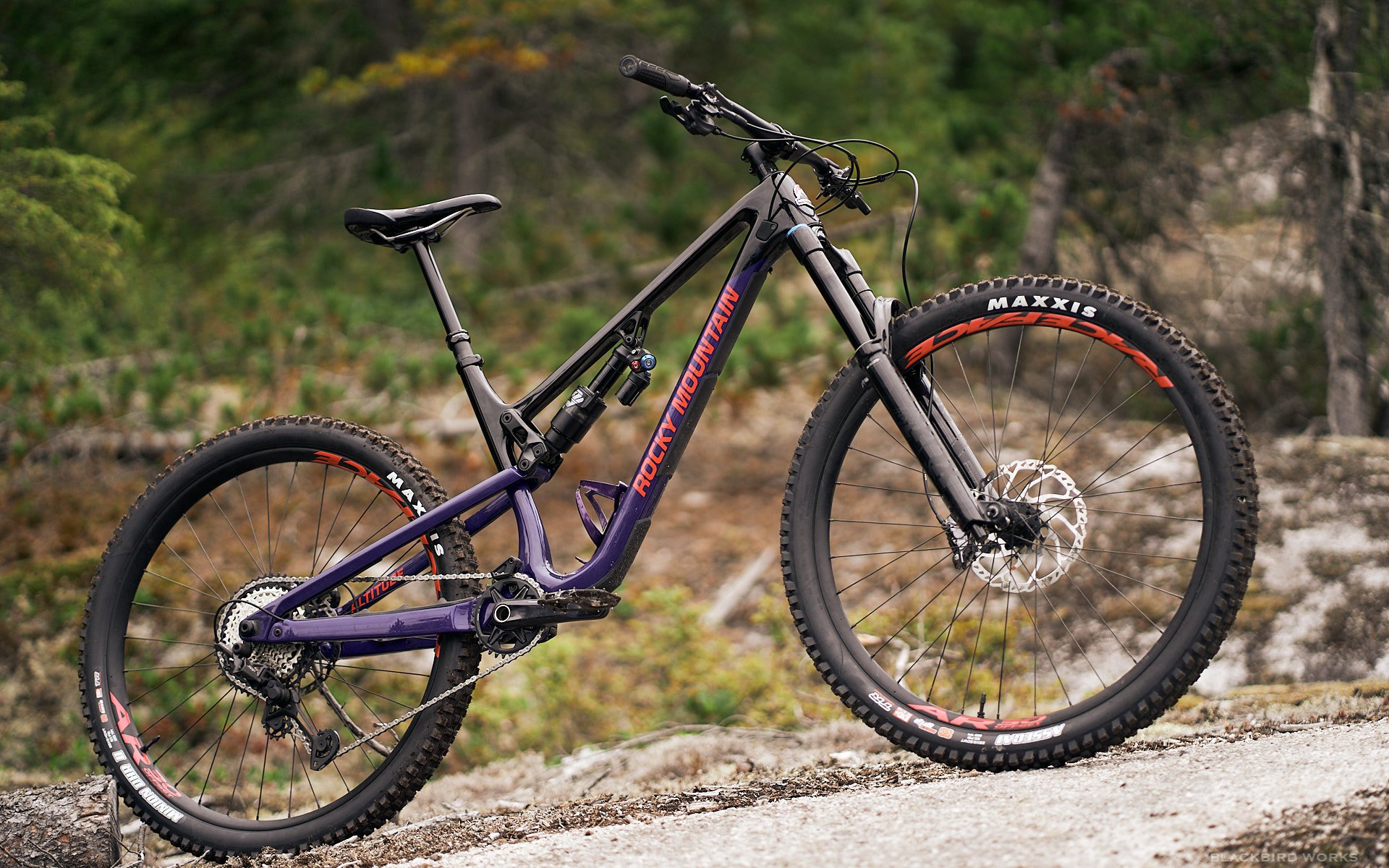
FIRST IMPRESSIONS REVIEW
2021 Rocky Mountain Altitude C70
Today marks the release of the 2021 Rocky Mountain Altitude. We have a separate article that covers the complete release with specs, details and pricing as well as a terrific launch video. Read on for our first impressions and stay tuned for the full review.
The Rocky Mountain Altitude has been a mainstay of the brand's coastal B.C. DNA since 1991. The model has run the gamut of of the mountain bike spectrum but the 2021 Altitude is Rocky Mountain's refined 170mm front/160 mm rear travel platform dedicated to pushing enduro race speeds and to aggressive trail smashing.
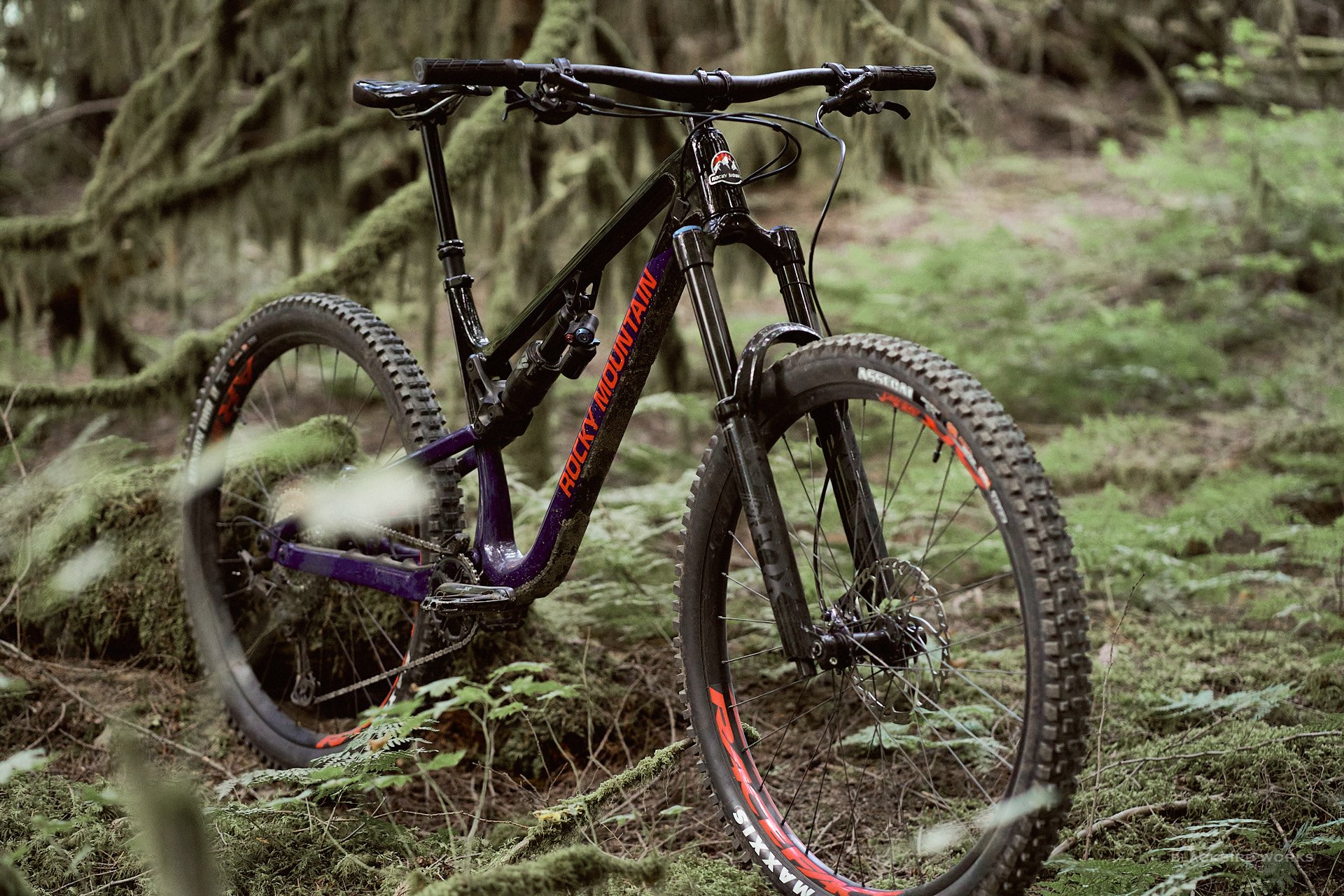
The Altitude's geometry has been revised, but not to the limit of the current geometry arms race for the slackest/longest/most progressive. RM's four-bar Smoothlink suspension kinematics also get a refresh for better small bump compliance, mid stroke support, and end stroke progression. A custom shock tune accompanies each individual frame size.
The previous generation of Altitude handled the 27.5” wheel size, with the Instinct taking care of the 29” category. Considering Rocky Mountain's enduro athletes have chosen 29" wheels due to increasing race speeds and rolling ease, the Altitude now wears the badge of a 160mm travel enduro-focused bike, eliminating the Instinct BC. There are four size options, with small frames sporting 27.5” wheels, medium affording the option of 27.5” or 29”, and large and XL sizes rocking only 29” wagon wheels.
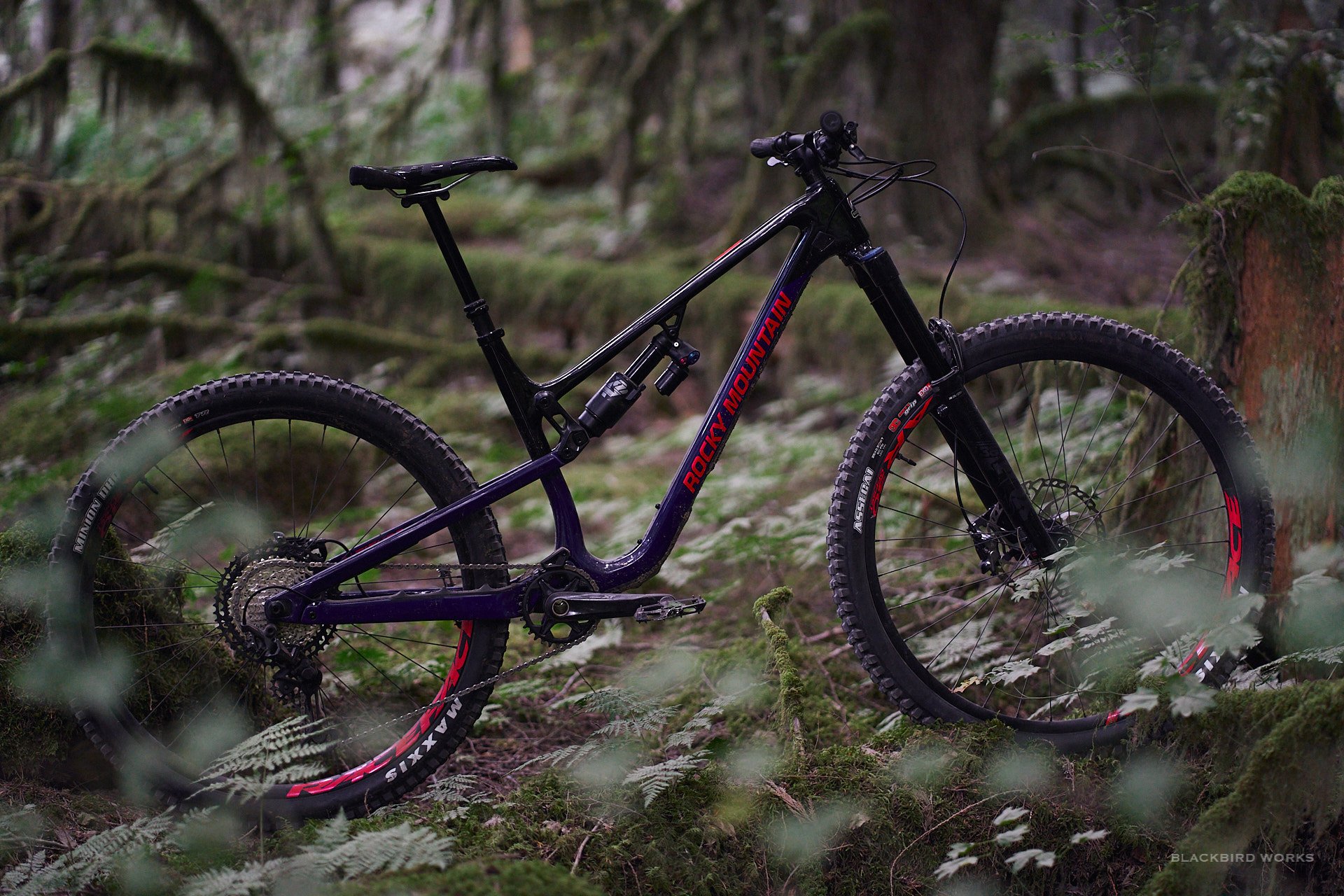
Grapevine is the official colourway title, but Purple Rain would have given a rad nod to Vancouver's (un)usual precipitation, and the Purple One himself. Seeing as the red lettering is called Heartbreaker, and top tube Black Dog, it'd be a harmoniously named swatch.
Frame Features
- Smoothlink 4 bar suspension platform
- Ride-9 flip chip suspension/geometry adjustment
- Sealed bearing eyelet at shock mount
- Updated tubing profile for front triangle stiffness
- 10mm fore/aft chainstay length adjustment via flippable dropout
- Tube in tube internal housing guides
- Molded shuttle guard, downtube and noise-cancelling chainstay protectors
- Swingarm mounted "Canadarm", with OneUp V2 top chainguide
- Modular shock mount for potential suspension kinematic updates (only on carbon models)
- Dual bearings at seatstay and chainstay pivots
- Max rear tire size is 2.6"
- Max chainring size is 34t, minimum 30t.
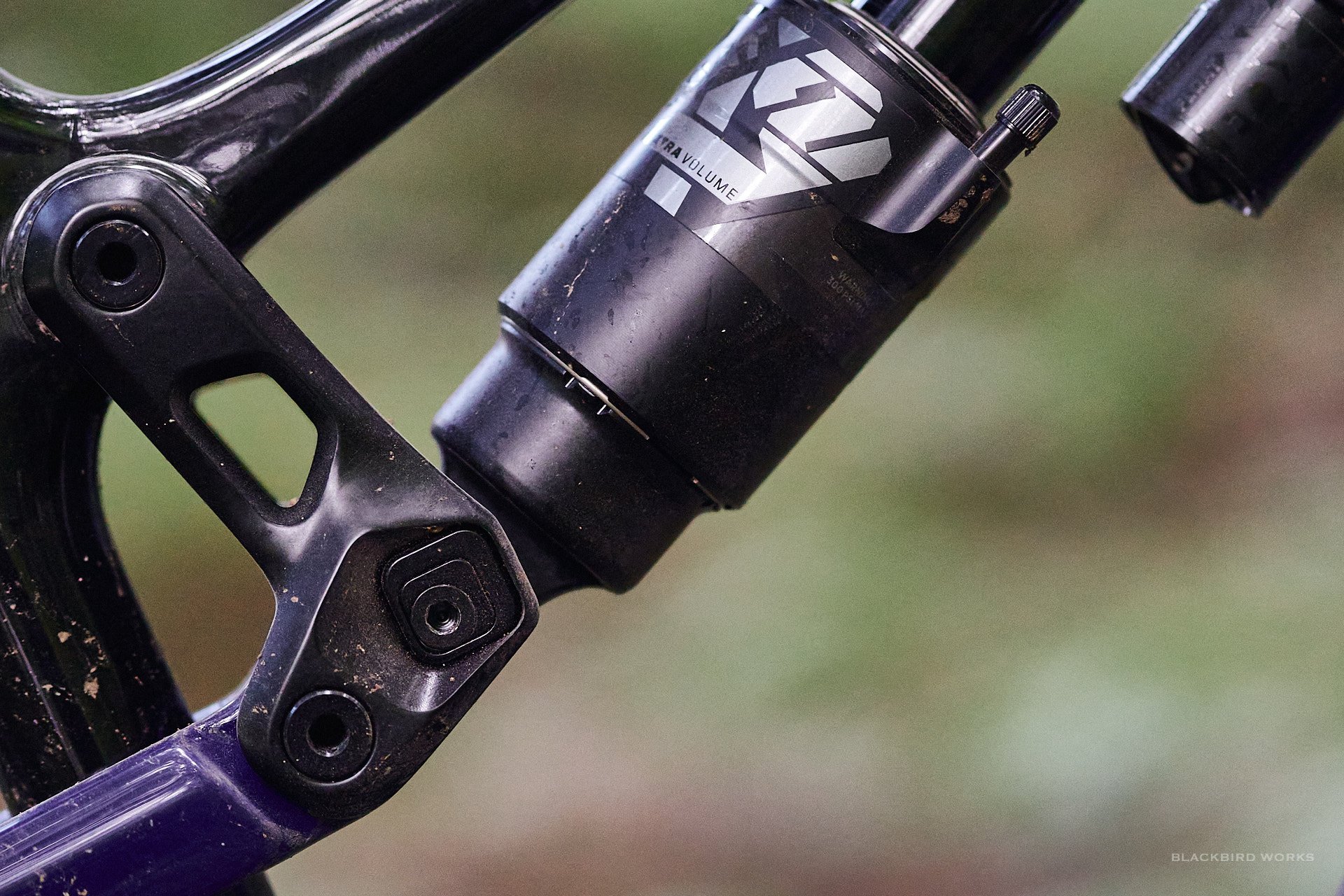
The Altitude features the Ride-9 flip chip, seen here in the slackest/most progressive setting.
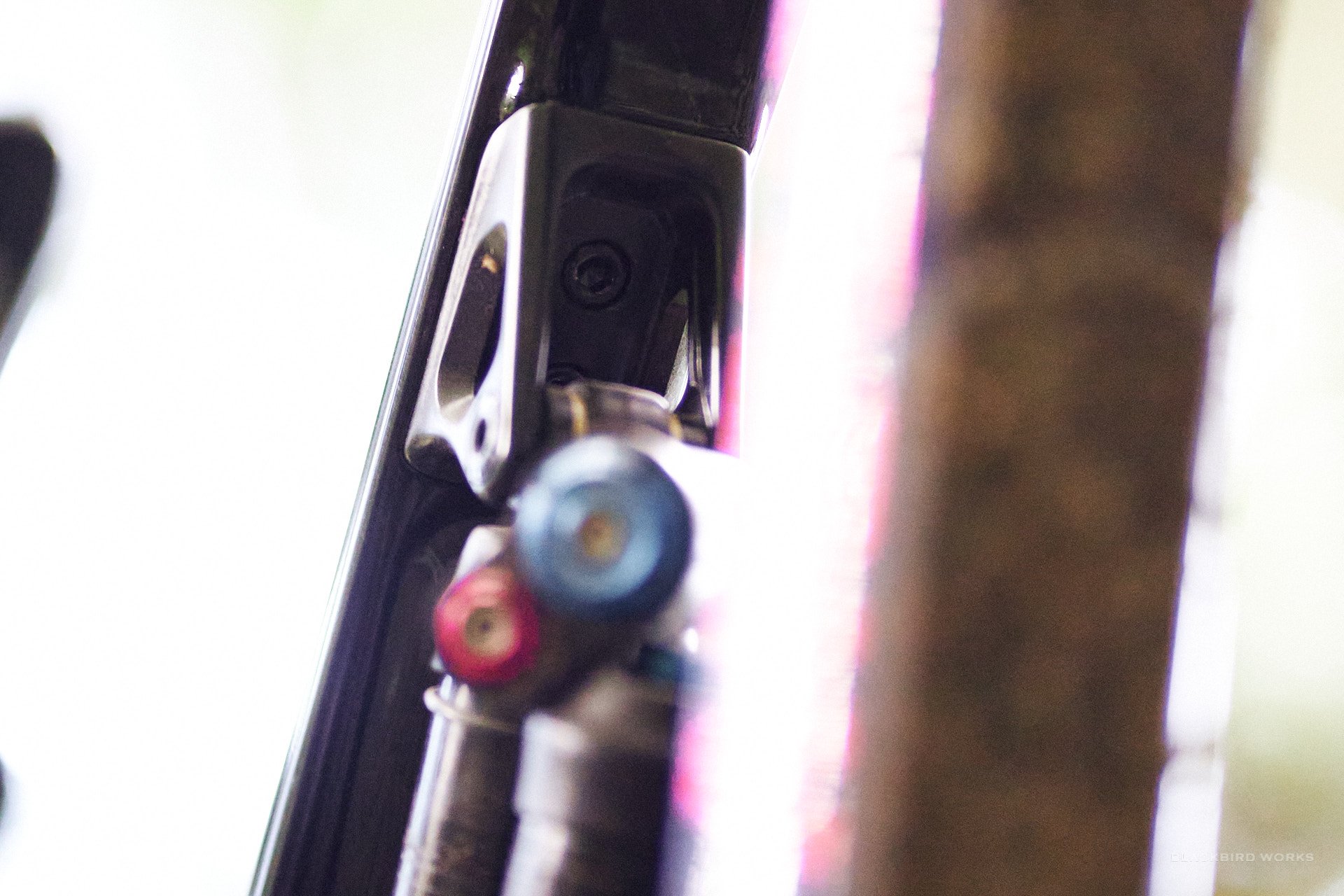
A modular shock mount on carbon models allows for future suspension kinematic adjustments.
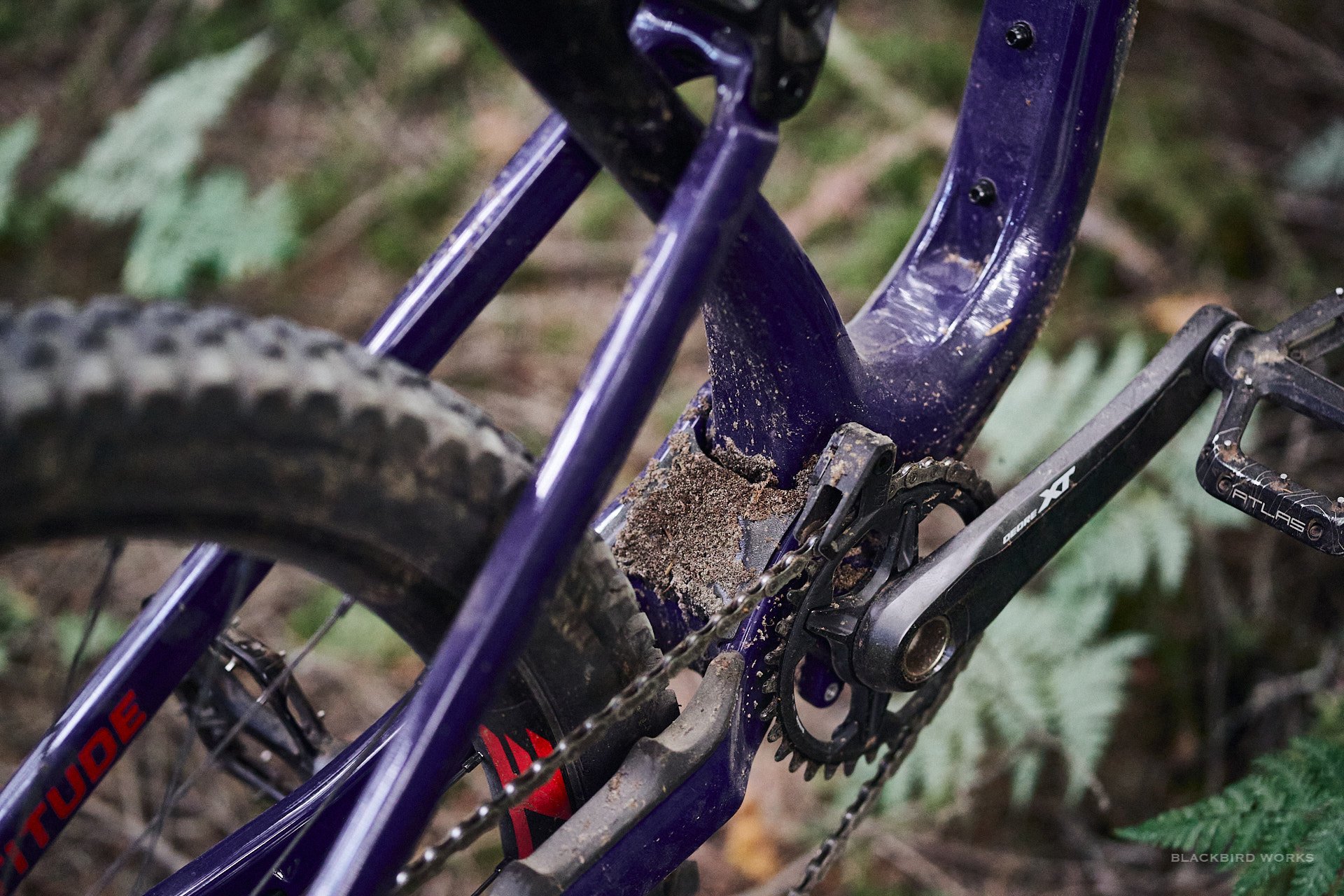
Rocky Mountain tips their Trapper hat to the Canadian Space Agency with their version of the Canadarm - a swingarm mounted OneUp V2 upper guide for chain retention and a precise chainline. The Canadian Shield loam shelf helps to keep stones and junk out of the BB shell pivot area.
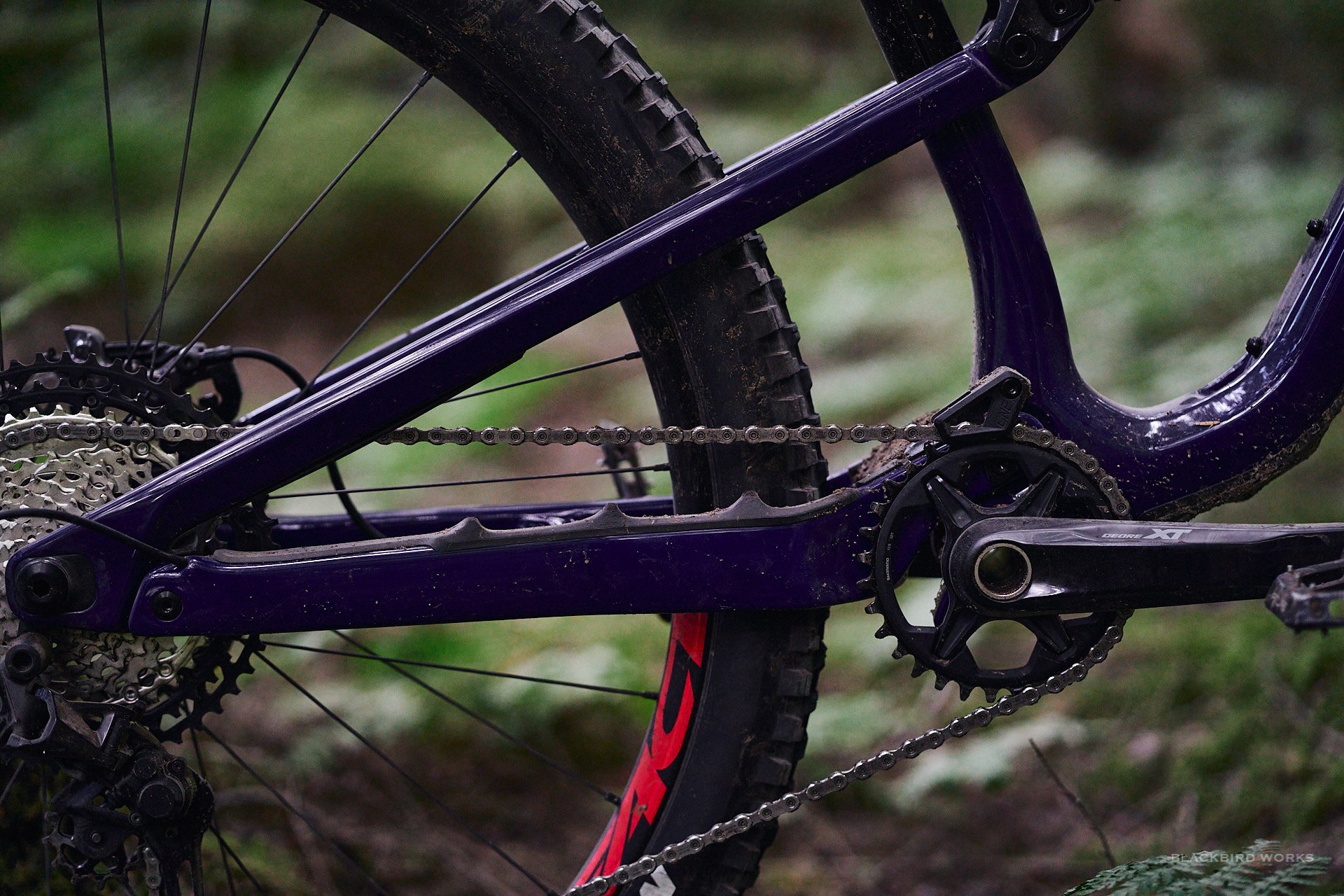
Chain slap is virtually silent with high-quality molded chainstay and inner seatstay guards. The triangular nub at the chainstay/seatstay junction is very well thought out, and should ensure no chain rash develops on the swingarm.
Geometry
The 2021 Altitude hops on the geometry progression train, but doesn't go overboard. After discussing numbers with Rocky Mountain's product manager Ken Perras, he is adamant that there is a line that can be potentially crossed with current bicycle geometry. With reach and wheelbase numbers swelling, head tube angles becoming more slack, a rider could become a passenger instead of a pilot. The 2021 Altitude keeps these metrics in check, with the large/slack numbers evolving as follows:
- Head tube angle slackens 1.5°, from 65.9° to 64.4°
- Reach increases 20mm from 454mm to 474mm
- Seat tube angle increases from 74.4° to 75.4°
- Wheelbase grows 36mm, from 1213mm to 1249mm
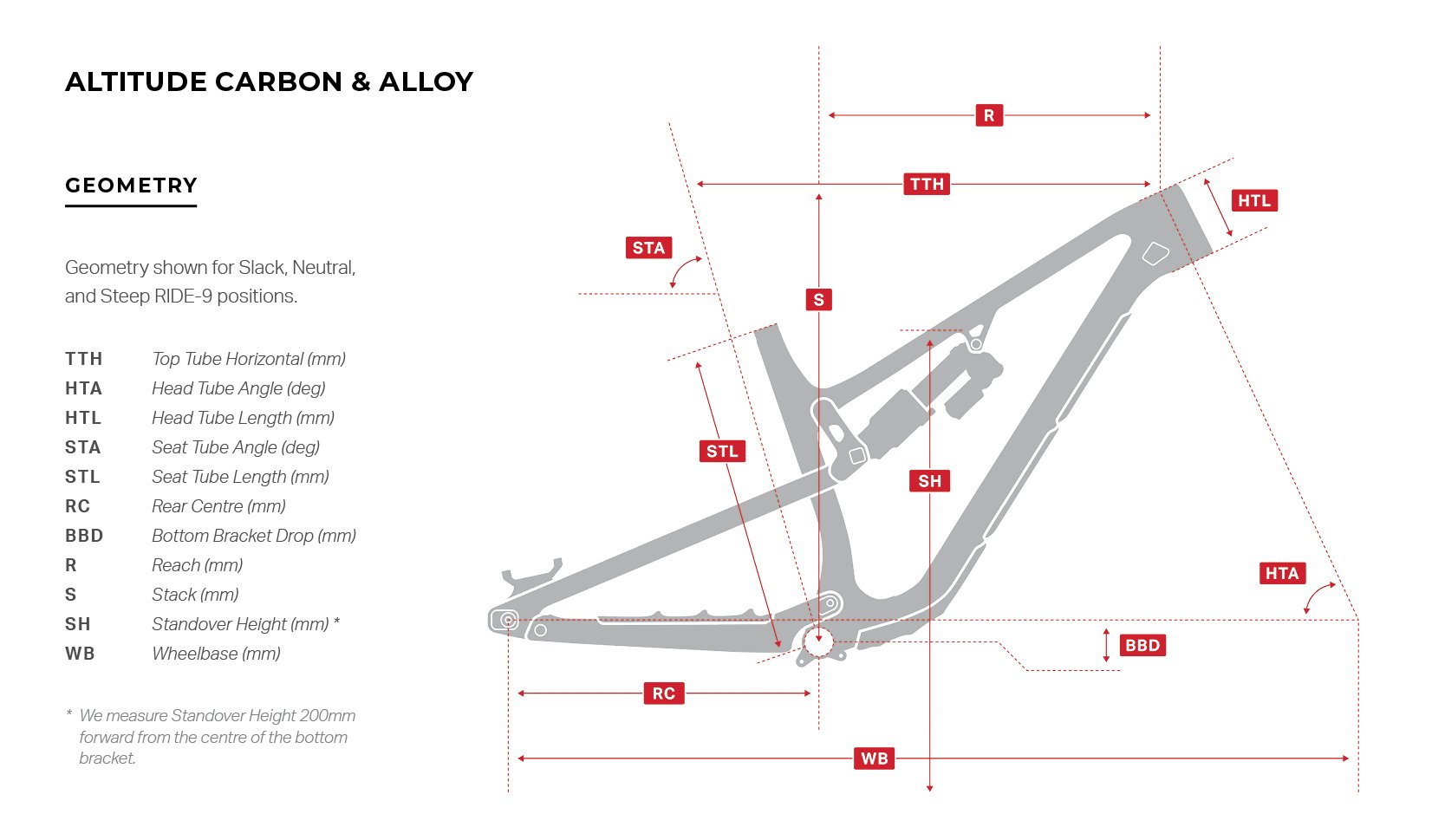
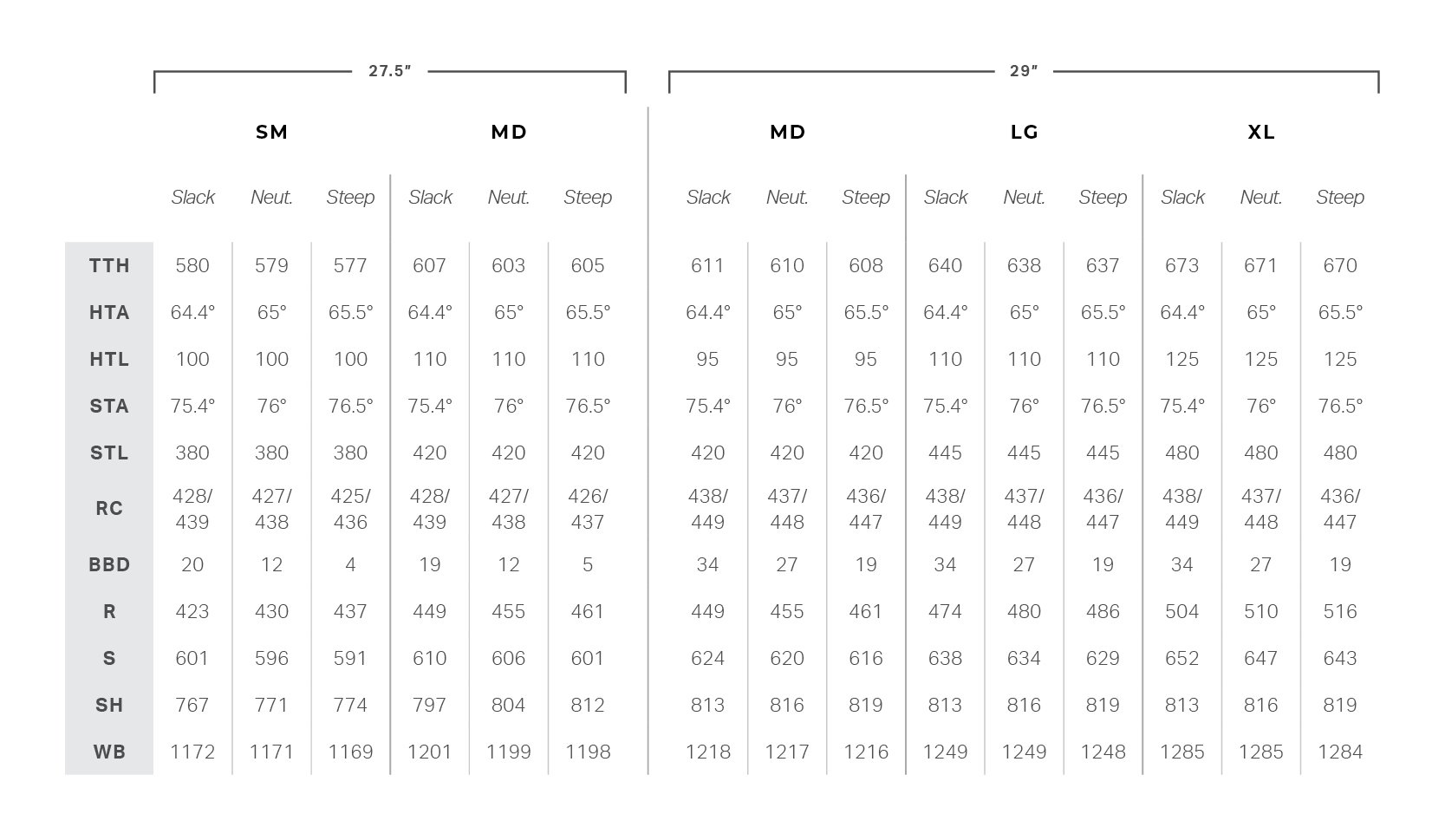
Geometry for the 2021 Rocky Mountain Altitude
2021 Rocky Mountain Altitude Model Range
The 2021 Altitude has a nice selection of models, with three alloy builds, (A30, A50, A70), and five carbon (C50, C70, C70 Coil, C90 Rally & C99). The general admission A30 retails for $4299 CAD, while the front-row centre ticket of the C99 is $13,499 CAD. All models get you to the same show, but are further refined as the price ascends.
I'll be riding the Altitude Carbon 70. The size large C70 hits the NSMB scale at 14.4kg/31.8lbs without pedals, and retails for $8499 CAD.
Rocky Mountain Altitude C70 Test Build Highlights
| Fork | Fox Performance Elite 170mm |
| Shock | Fox X2 Performance |
| Brakes | Shimano XT Trail M8100, 200/180mm rotors |
| Drivetrain | Shimano XT M8100 12 speed |
| Cranks | Shimano XT M8100, 170mm |
| Wheels | Raceface AR 30 on DT Swiss 370/Rocky Mountain sealed bearing hubs |
| Front Tire | Maxxis Assegai 2.5 Exo+ Maxx Grip |
| Rear Tire | Maxxis Minion DHR2 2.5 Exo+ Maxx Terra |
| Dropper Post | Raceface Turbine R (by Fox) 175mm drop |
| Handlebar | Raceface Turbine R, 780mm |
| Stem | Rocky Mountain 35AM, 40mm reach |
| Grips | Ergon GE1 Evo |
| Saddle | WTB Volt Race 142 |
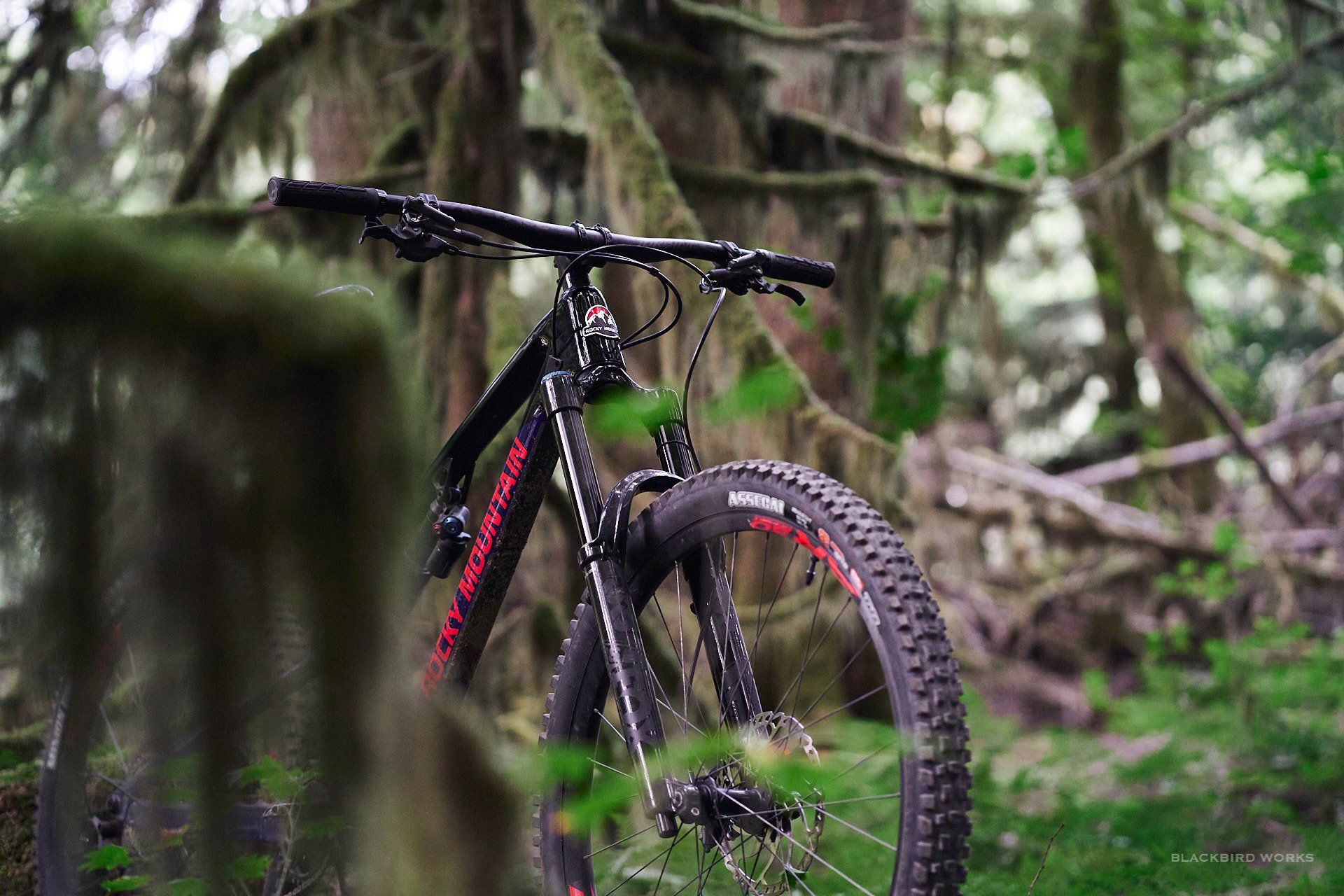
Fox's brilliant new 36 Performance Elite. The Grip2 damper and chassis are updated for 2021, which is noticeable in the best way. Adjustments include high/low speed compression and rebound. It arrives without any volume spacers, allowing riders to tweak the progression curve, if so desired.
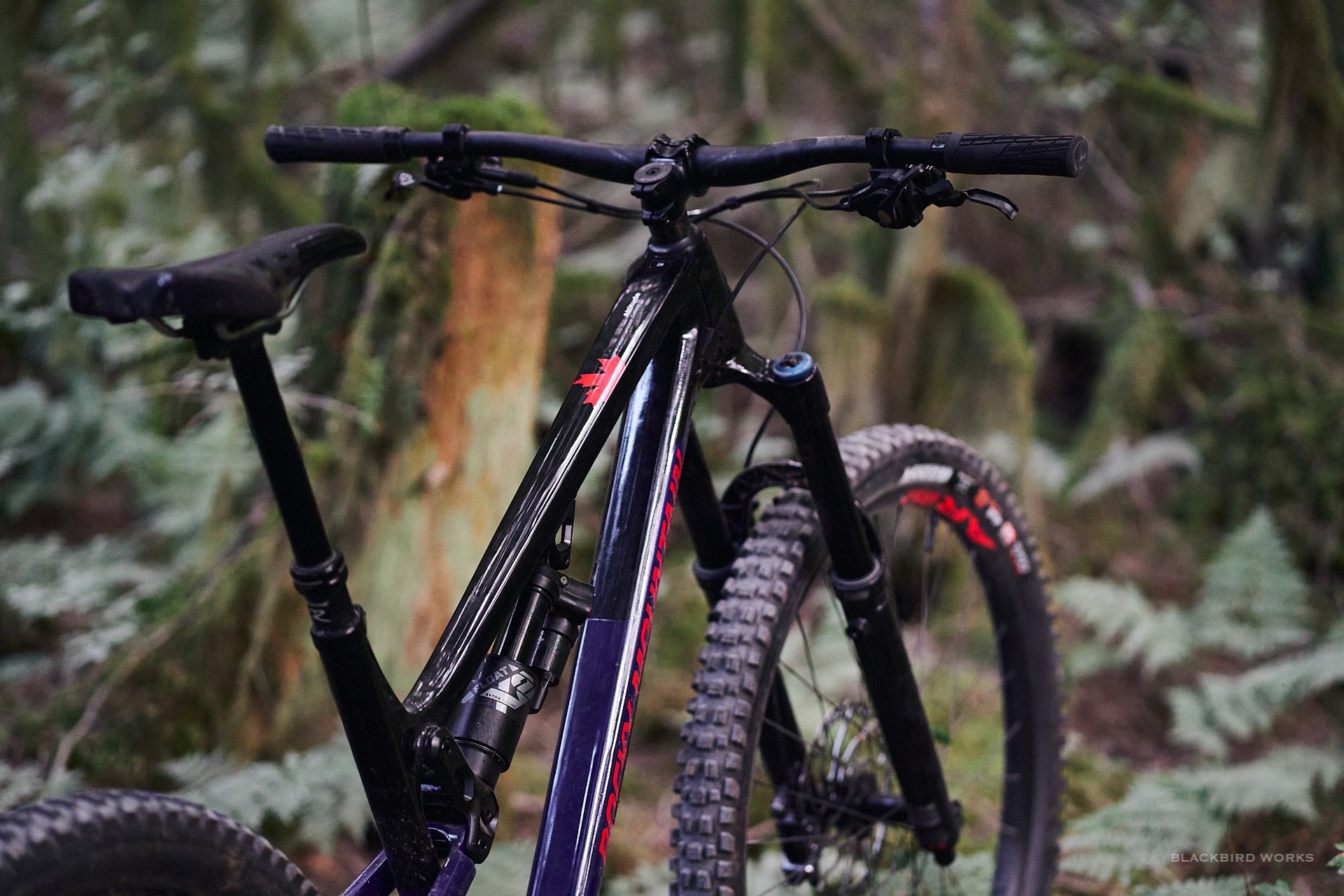
The Fox X2 Performance suits the Altitude C70 well - plush off the top, and very smooth. The X2 Performance features low-speed rebound and compression adjustment, and end-stroke progression tuning via volume spacers in the air can (Rocky Mountain tunes the X2 with two volume spacers from factory). A climb switch drastically increases low-speed compression for ascents.
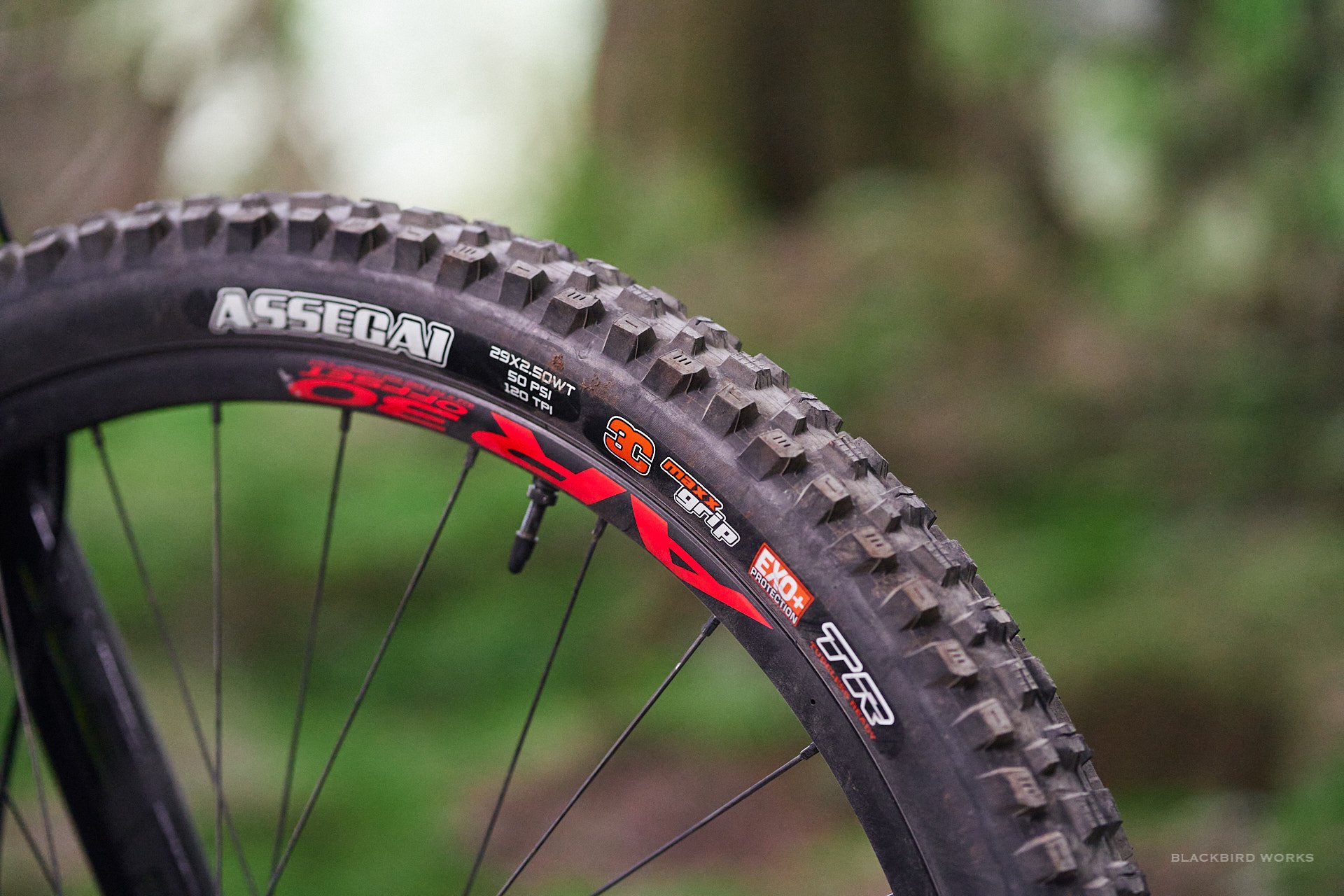
Is this even real?! Maxxis' Santa Claus brings an early Christmas present, with the Assegai Maxx Grip in EXO+ casing.
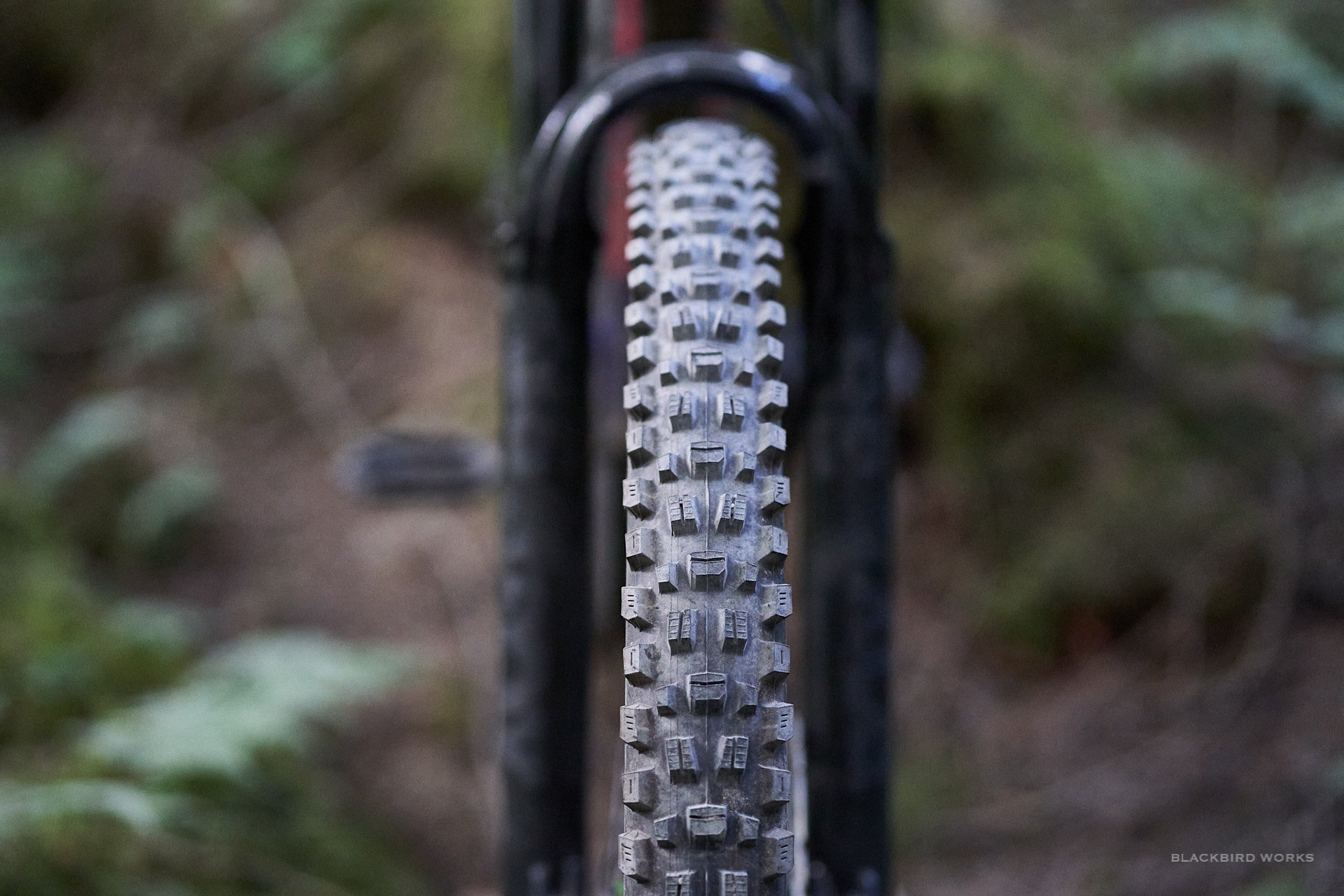
Only now does the sticky compound arrive on a lighter casing, compared to previous options of heavier DoubleDown or DH casing only.
Rocky Mountain Altitude C70 Build Notes
Rocky Mountain's attention to detail on parts is impressive; many small details have been pored over meticulously. Echoing Tim Coleman's assessment of the Slayer, I'd agree with him that there isn't much, if anything, that I'd swap out for personal preference. The Ergon GE1 Evo grips are very comfy in all the right spots. I'm picky about my saddle, usually preferring the Chromag Trailmaster, but the WTB Volt Race is also a contender for my new favourite seat. The alloy Raceface Turbine R handlebar is a smooth change from stiff carbon 35mm bars. Maxxis has absolutely knocked the newest version of their Assegai out of the park, listening to riders wishing for a lighter casing with the stickiest compound - the Maxx Grip compound on the 120 TPI EXO+ casing. Considering riders regularly wear out rear tires more quickly than front, Rocky specs a more robust compound Maxx Terra Minion DHR2 EXO+ in the back.
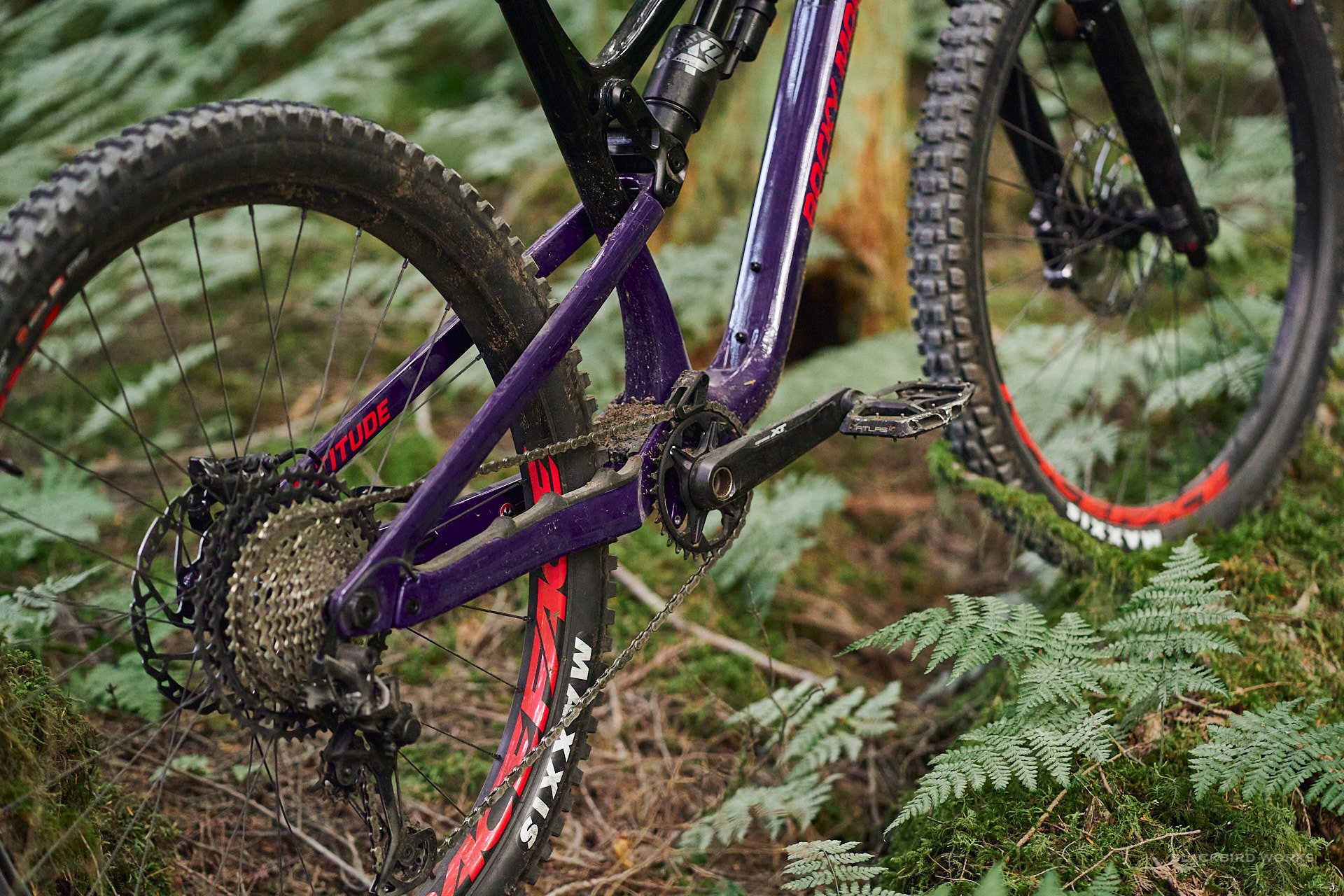
A full Shimano XT transmission. Rocky Mountain isn't skimping by using a lesser quality cassette or chain.
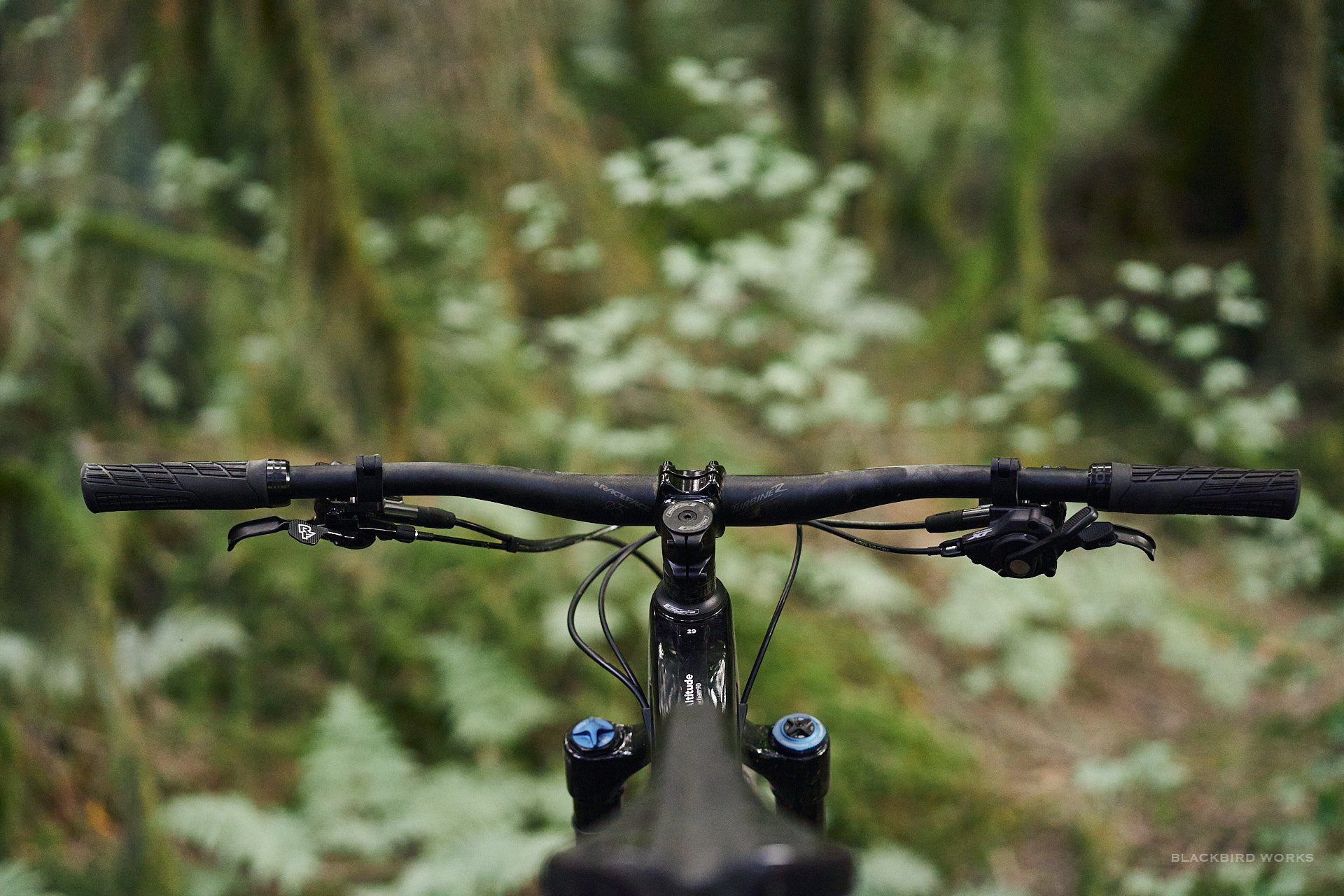
A tidy cockpit, courtesy of the Shimano I-Spec EV bar clamps. The Ergon GE1 Evo is in the running for my new grip of preference.
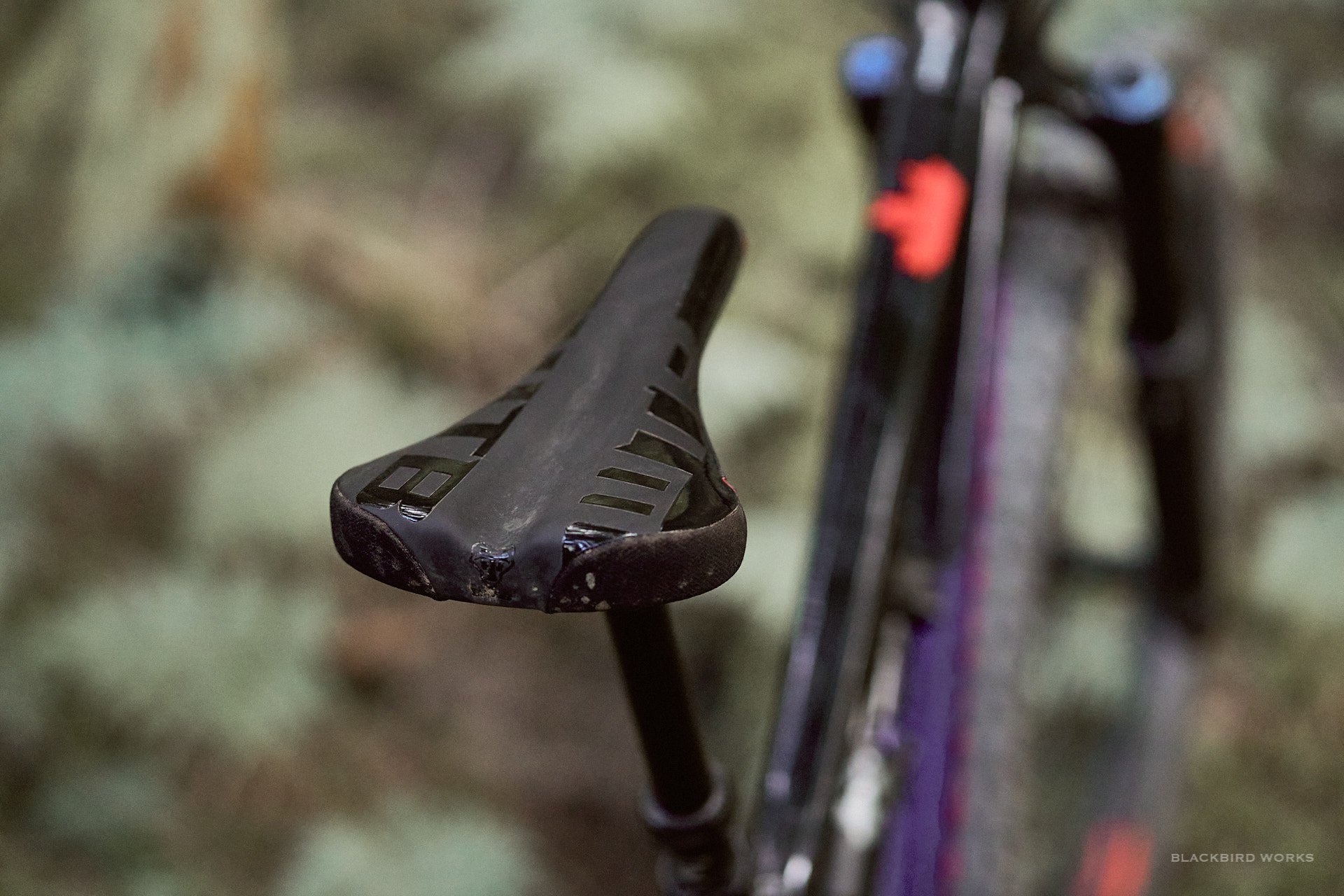
WTB Volt Race 142 saddle, very comfortable.
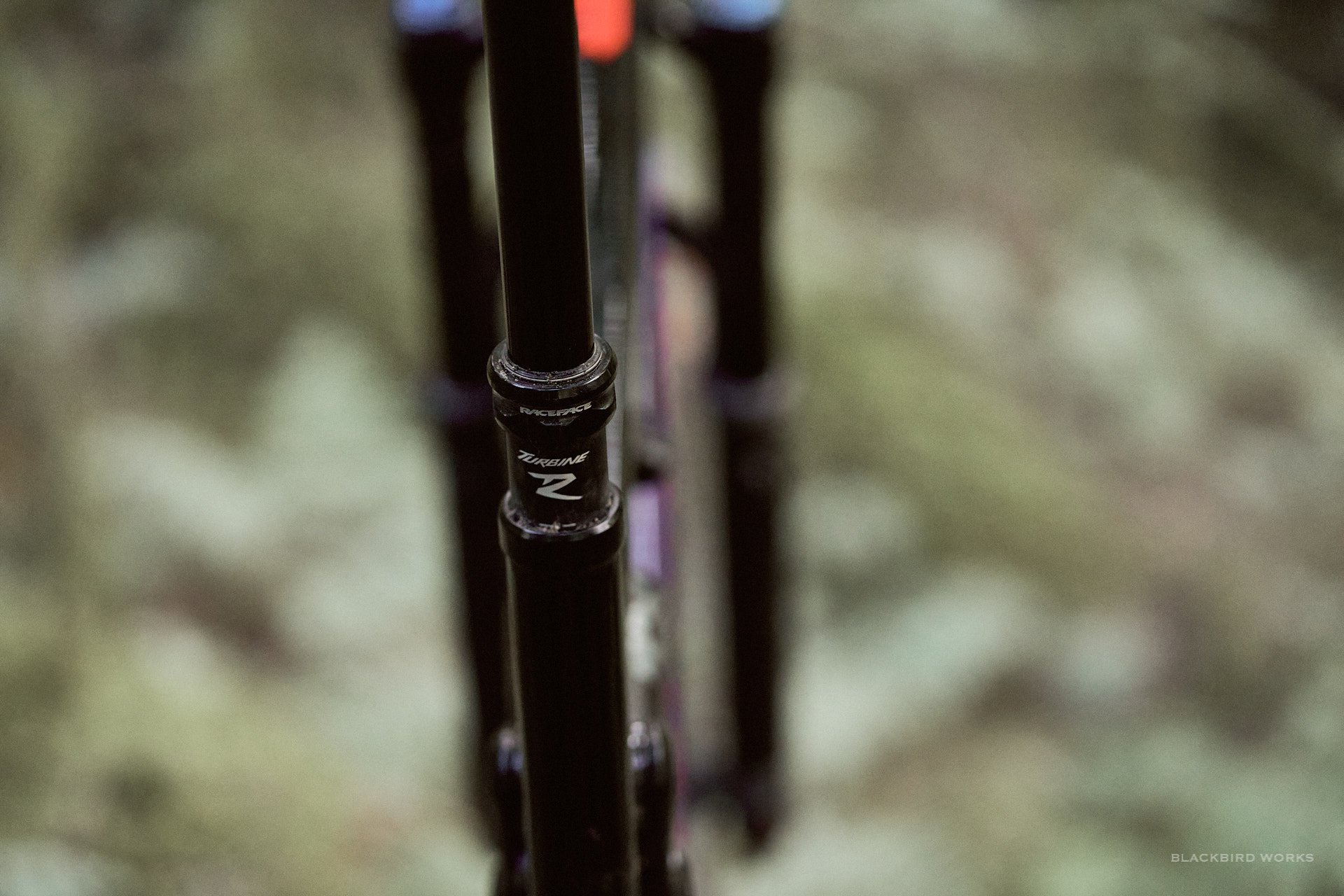
The Raceface Turbine R post has a very light lever feel, and stays put when it's supposed to.
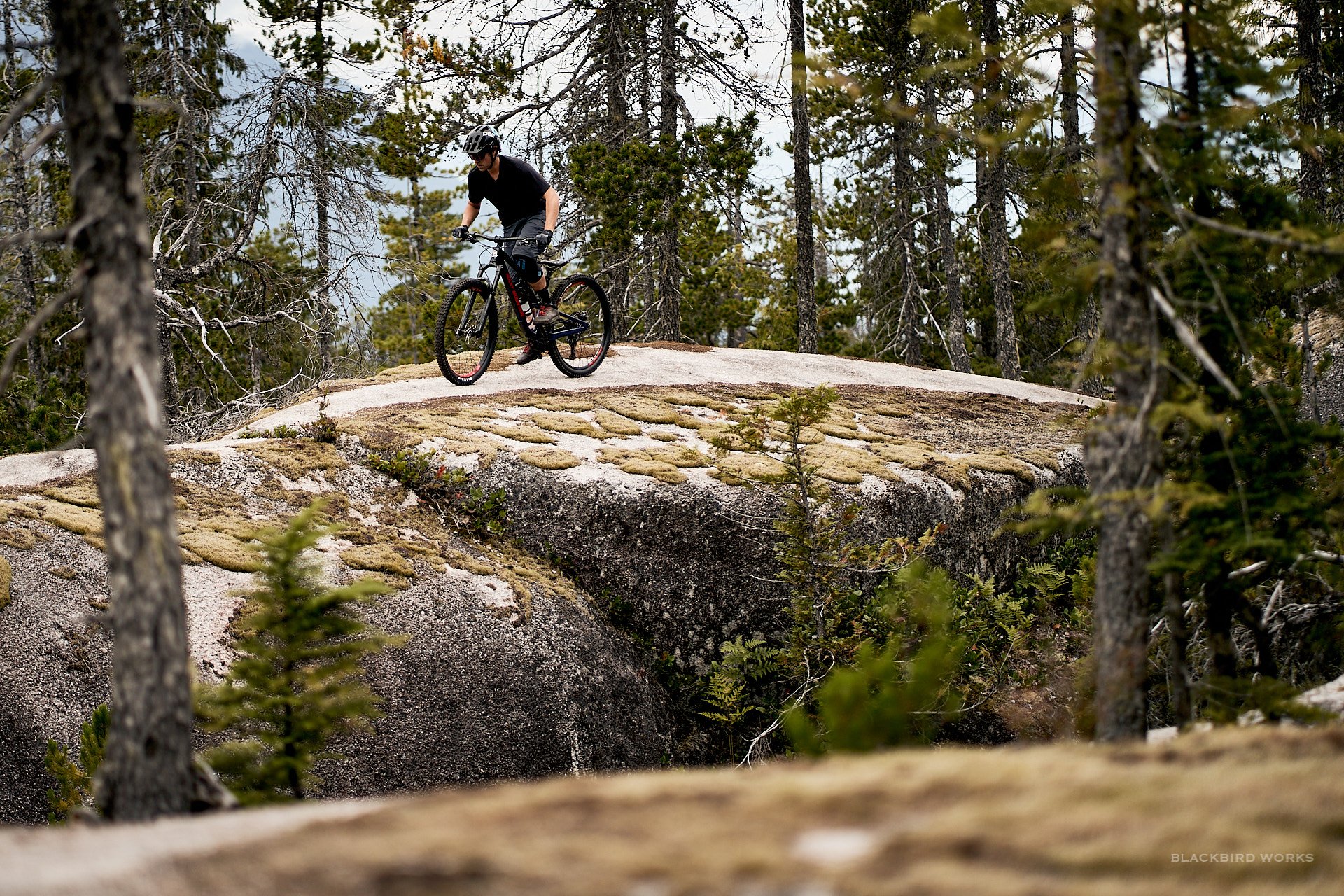
Climbing/Pedalling
The Rocky Mountain Altitude is an enduro and heavy-duty trail bike, focused on pinning it down the mountain. While it usually doesn't figure on the time sheet, enduro racing also requires an immense amount of climbing. Fortunately, the Altitude in no pig on the ups. Following geometry trends (for the better), Rocky has steepened the Altitude's seat angle from their previous enduro bikes. This shifts one's weight over the bottom bracket, shortening the feel of the front end, allowing for a more central and comfortable climbing position, while properly weighting the front end.
The Altitude steadily winches up punchy climbs, providing maximum traction with minimal bobbing. There is a climb switch on the Fox X2 Performance shock, which ramps up low-speed compression. I'll use this for longer fire-road-style climbs to extract every iota of forward energy, or on loose climbs requiring one to mash through mush, searching for the next island of positive traction. The X2 is so supple in its stroke, I've yet to experience a climb where flicking the climbing switch on has drastically reduced traction.
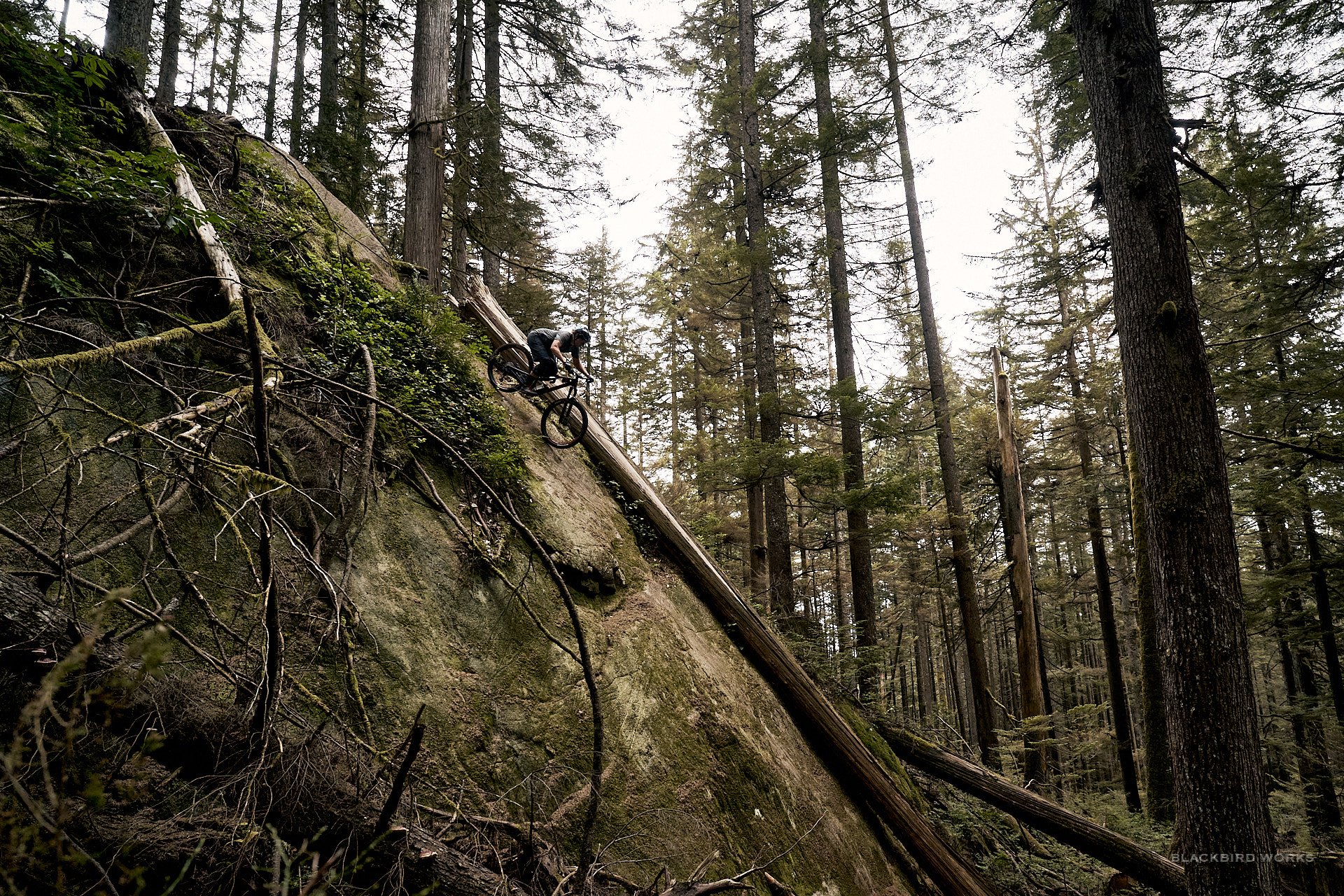
Stepping into some sizeable lines which were previously on the wish list.
Descending
Rocky Mountain's chemistry blends an agile, popping plow that can snake into tight steeps and blast through chunder - all while being comfy in the air. The Altitude also carries speed well through flatter terrain, whether it floats over the top of rocks and roots, or uses them as transitions to pump through and gain speed. North Shore conditions are currently dry, and I'm excited to see how the Altitude handles the fall grease. And, while my ride impressions are limited, I feel like I'm getting back on lines I haven't hit for a quite some time. Some doors are getting unlocked in my own riding progression, unexpectedly ramping up later in the season. I'm damn happy to be hitting these features on the new Altitude, to understand the depth of its capabilities. Future days on the Altitude will hopefully reveal more cheat codes I can use to unlock scary lines, whether I'm earning them while pedaling through jank or catching a leisurely shuttle. Time will tell.
For more on the new Altitude, head to bikes.com or check the press release and video here.
Age - 38
Height - 182cm/6ft
Weight - 92kg/205lb
Ape Index - 1.035
Inseam - 32"/81cm
Mountain: Seymour
Bar Width - 780-800mm
Preferred Reach - 475-500mm
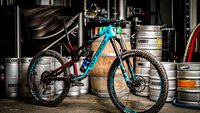

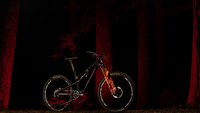


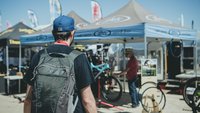



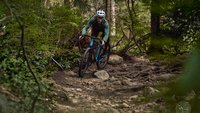
Comments
Brumos73
3 years, 7 months ago
Can't believe nobody has mentioned this yet..... $8,500 price tag and it comes with DT 370 rear hub. The remaining parts spec is not bad but the asking price is astronomical for what you get. This has to be one of the worst value current bike on the market.
Reply
IslandLife
3 years, 7 months ago
Oh I didn’t notice that!! Wtf! Demo’d a Megatower last year with that hub and noticed its horrible-ness right away. Should never be near a 8k+ bike.
Reply
Tehllama42
3 years, 7 months ago
To me, the return of Ride9 and integration of Chainstay flip chips (a 10mm adjustment) is the actually huge story - I don't think I can fully utilize a 170/160mm 29er enough to justify replacing my Instinct BC, but the combination of those features would make the 2021 release of a 150/140mm Instinct something that drags me into owning yet another Rocky.
Also, parts spec being on point is not lost on me - again, as a value buyer that stuff adds up, and Rocky remains one of the few brands where I don't spend 5 minutes taking a break from the product review to check pricing and see if I'd be money ahead building frame up or trying to piecemeal upgrades to a mid-range spec.
I do wonder if a very NSMB-esque min-max build would be something they're open to - Suntour Durolux Fork, X2-PE or TopazT3, GX Eagle, and the RF TurbineR finishing kit would be a statement trim, especially if they go the Alloy-50 model trim route.
Reply
Lu Kz
3 years, 7 months ago
Bro do you even min-max? Gotta be Deore 11 speed 11-51!
Reply
Tehllama42
3 years, 7 months ago
Deore with big rotors (or Code R) on the brakes, yeah.
I've gotten spoiled with SLX 11spd on e.13 cassettes - massive range is amazing on a bike I pedal to and from trailheads, and excellent when I basically winch and wheeze up steep stuff just to be spun out on the way down.
Reply
Lu Kz
3 years, 7 months ago
Oooh good call on the e13 cassette. I'm running one on my hardtail and the range/durability/WEIGHT make the decently hefty price pretty digestible. I keep trying out 12 speed and going back to the lightweight and excellent 9-46 11 speed E13 mixed with 11 speed shimano. Not exactly as "min-maxed" as the new deore 11 group (because you need an XD driver and even though the cost over time on the e13's is excellent, the upfront is decently expensive), but is otherwise an excellent option!
Reply
Tehllama42
3 years, 7 months ago
Yeah, I'm trying to Maximin it at a different cost elbow - get into diminishing returns, but don't break the $1/g range. I have found that cranks are a vastly superior option to frame for stiffness and weight, similarly splashing out for that cassette and a good oval chainring has been an enormous improvement at the level of running properly set suspension, and with DT 360 hubs not unreasonable for cost and still snags a weight gain. It's the availability of on-sale 11spd kit that's cheap that makes it work on the budget at all.
Ironically, my plan at this point if I needed a do-over would be to get the Deore 12-speed, swap to e.13 cassette, but toss the rest of that 12-speed stuff onto my hardtail, and dig out an anxient XO 2x10 crankset in carbon, so that I can run a 42/28T setup there stacked atop current cassettes, since I run that bike (dual RekonRace 29x2.35) as an all-mountain hardtail as well as road/gravel setup to chase people on road bikes.
Reply
IslandLife
3 years, 7 months ago
Shit! Maxxis must have dropped that new Assegai at the same time as this bike. I was searching for a MaxxGrip EXO+ tire 2 weeks ago as I swear I saw one on some pros instagram (couldn't find it later though).
2 weeks ago that tire wasn't listed as an option on the Maxxis site... today, it is! Oh well, will just have to push harder and wear this MaxxTerra out so I get on the MaxxGrip goodness! Or maybe I'll sell it... it is pretty fresh! Anyone want a 29" 2.5WT Maxxis Assegai EXO+ MaxxTerra?? Anyone??
Reply
Chad K
3 years, 7 months ago
I've been checking the Maxxis Website frequently to see when the tire would show up ever since I caught wind of it little bit ago. Looks like it is finally listed, but unfortunately still none for sale in the 29 size, from what I saw.
Reply
Timer
3 years, 7 months ago
Nice looking bike with sensible parts. I'm very curious how it compares to the Slayer. The EWS team have shunned the slayer and kept riding their Instinct BCs. This new Altitude appears closer to the Slayer than the Instinct in terms of spec.
But since when are 35mm aluminium bars a welcome change? For the last couple of years the entire industry and media have been advertising the comfort of carbon handlebars ("engineered flex", yadda yadda). While at the same time switching to needlessly stiff and heavy 35mm clamps. Have we come full circle now and arrived at the worst of all worlds?
Reply
Graham Driedger
3 years, 7 months ago
A little birdie commenting below hints at the Instinct redesign. Word is, when Rocky released the current Slayer, their EWS athletes hopped on it because it's an absolute crush machine . More importantly, the Slayer suspension platform being very similar to the new Altitude, in a kinematic sense.
35mm alloy bars are a personal preference thing. While I haven't spent much time on a OneUp carbon bar, I'm sure it offers compliance I'm looking for. A Renthal 35mm carbon bar was far too stiff and jarring for my mitts. Raceface alloy seems to slightly deaden vibration.
Reply
Tehllama42
3 years, 7 months ago
That has me wondering if something like the Oozy VIbrocore type bar would be a particularly good choice - again, as somebody who intentionally runs 810mm bars my perception of 'overly stiff' for carbon is a very skewed one, but I'm also running 31.8mm carbon and weigh in at the 'probably should be concerned about carbon anything' side of the Clyde range... I do think there is an issue with divergence of how much compliance is beneficial, and where it should be.
I have zero inside information on anything Rocky is doing, but it seems silly to me that they wouldn't translate the same engineering design elements into the rest of the lineup - did the same with the blind pivots, and lots of other hand-me-down stuff elsewhere.
I'm mostly thrilled that anybody who had any gripe about the previous generation Slayer (the older 650b only one), this bike basically answers them all. I remember being so thoroughly blown away with how capable that setup was, getting one available in a real XL size with 29" wheels has me seriously considering how overbiked I can stand to be... but I similarly can anticipate that an Instinct revision will drop it squarely into the ideal category for my uses.
Reply
Timer
3 years, 7 months ago
Some bike magazine did a test by strapping vibration sensors to handlebars. Sadly i can't find the link anymore. They had a Spike Vibrocore, a standard alu bar (maybe Raceface, not sure) and a Carbon bar (Syntace, i believe). All in 31.8mm.
In the end, the standard alu bar transmitted the least vibration to the grips, while Vibrocore did absolutely nothing. However, the differences between all three bars were quite minor, compared to the entire system of tyres, suspension and grips.
There is one caveat to the Vibrocore story. Vibrocore itself appearently does nothing. But the Oozy Vibrocore bar is very light for it's width and material, made of thin tubing and therefore quite flexible. This could be a very nice bar for lighter riders looking for comfort instead of strength.
Reply
Pete Roggeman
3 years, 4 months ago
Can you remember which mag it was? Honestly, so few do any empirical testing of any value that I'd be hesitant to take anything away from that unless they really established good testing protocols. I have a lot of direct experience with brands and media and that kind of testing, and it's about 100% BS, 90+% of the time. I'm not saying that means that we should therefore just trust what the brands say - or what tester x or editor y says - but if you can't find the article, it had bad SEO, which suggests, just maybe, that it also may not have been that credible a source. It could also mean a lot of other things, of course. All I'm saying is that what we're left with is 'I read such and such once' but we don't know where.
And, please don't lump us in with other MTB media. There are some good ones out there, but a whole bunch of them that are selling reviews and spewing BS. We don't have to try not to do the first part - we just don't do it - but we do make an effort not to simply reproduce what the brands tell us in these articles. So, just because you're reading elsewhere that the media and brands are selling 35mm for no apparent reason (to you - which isn't true, by the way) doesn't mean that we're in or out on that particular concept. We'll get there or not on our own.
Reply
jaydubmah
3 years, 7 months ago
I was running a Chromag Fubar 35 aluminum bar on a hardtail, and my elbows were killing me! Switched over to the One Up carbon bar, and I can definitely say that it's more compliant and takes a lot of the edge off. Paired with their One Up grips - I've been super happy.
Those Oneup lads know a thing or two!
Reply
Jason West
3 years, 7 months ago
I thought carbon was suppose to dampen jarring frequencies? I Know some carbon bars were very stiff. All the alloy bars I've used (which aren't many) seemed very stiff compared to carbon bars. My Nuke Proof carbon bars are very comfortable and they're also 31.8
Reply
Tehllama42
3 years, 7 months ago
*Disclaimer, I spend time on strange parts of the internet, where nerds argue over the frequency response and resonant modes of carbon on racing drones, and actually pore over DAQ systems to analyze it...
Frequency response is a variable thing, and particularly with larger objects and high layup densities at bends, the frequencies where composites damp incoming vibrations aren't necessarily where you want them, and if somebody is trying to chase out low frequencies that get amplified, the answer is adding stiffness which typically compromises any efforts towards compliance.
Seeming stiff, and actually transmitting a particular shock/vibration power spectrum density equivalent are two slightly different things, but definitely related. Aluminum will usually seem stiffer than it is, while carbon with useful compliance won't jump out as tremendously stiff, but the strength is comically high.
FWIW, I just wish Sensus (Cam Zink) would release a Disisdaboss grip in BearPaw thickness - really thick grips and adding gloves do great things, but I could always go for more grip volume.
Reply
Cr4w
3 years, 7 months ago
Do you think the guys at Geometron are smugly congratulating themselves as they watch these more conservatives companies inch their way halfway to where they were at what, 4 years ago? It's still progress.
Reply
Tehllama42
3 years, 7 months ago
There have to be some mixed feelings about this - both Nicolai and Chris @ Mojo have to feel utterly vindicated with long/low/slack bikes, mullet combinations, and everything else having become mainstream... but now what direction are they supposed to go in to stand out in a competitive market where economies of scale dictate so many things.
Does make me kinda laugh that for all the R&D capability the (particularly larger) companies have access to and crow on about in their 'about us' page, the fact that it has taken years to replicate success somebody else already proven out a decade back (Chris has been on about DH wheelbase bikes for a decade) kinda speaks volumes about how the bike industry functions, though it's a product of riders (and sponsored riders who are talented enough to ride anything).
Reply
Tehllama42
3 years, 7 months ago
Here's a 2014 Danny Milner interview with Chris Porter - this is the article that nudged me into the 'long bike nerd herd'. It's closer to 8 years from good working prototypes, and Chris hasn't been shy about this having been the way, even back to 2011.
https://www.mbr.co.uk/news/size-matters-why-were-all-riding-bikes-that-are-too-small-321374
Given the relative cost of welding up a couple of mules and doing some actual timed testing, I feel like there were a couple EWS titles that were just free for the taking if a brave manufacturer paid attention... thank god Megavalanche exists as an event to force that process. The original Evil Following, for all its foibles, was still a bike that converted entire fleets of journalists because a 120mm 29er could out-ride most of their ability set (and mine, for practical purposes), and that wasn't that long or slack a bike. I'm still confused why the subsequent year Specialized Camber wasn't a partial knockoff of that concept. I've been similarly confused why the FuelEX and Hightower lagged behind until My19/20 to be remotely relevant. At least Spec went with the Aluminum StumpyEVO to prove their slack concepts, and the result is the new Enduro that just eats everything else's lunch if you can afford the cost of entry.
I feel (kinda) bad bagging on some of the big design teams, but I mean every well received aspect of the just-released Slash is basically a tacit acceptance that the outgoing model was bad. The Yeti SB130 (nee 136LR) basically went halfway towards resolving everyting the SB5.5c should have been, yet it's still not long enough for my relatively close to average 6'2" self.
... and somewhere Giant engineers and PR folks are finishing off their final servings of crow and hopefully getting on the bandwagon, because we're still overdue for a proper 140mm aggressive Maestro 29er.
Reply
Chad K
3 years, 7 months ago
The 505mm reach of a XL Yeti SB130 is not enough for you? I'm only 2 inches shorter and feel very at home on a size Large SB130. Genuinely curious, what reach would be long enough in your mind?
Reply
Tehllama42
3 years, 7 months ago
I'd argue that's the part they got right - to me I wanted it to be a slightly slacker bike with a bit more travel - once LR'd +150mm fork and Cascade Link modified, the reach comes down to 495mm, which is actually spot on for me (and those other two mods make that bike absolutely baller)... just hard to justify spending that much knowing I have to make more mods to it, and my oversized untalented self (well, I do have a talent for straight-lining rock gardens) would probably need the updated rear triangle as well.
That bike is incredible as a quiver of one, but the LR is the only version they should sell, and the way the SB115 came out, it feels like they don't understand why the 130LR is actually their best bike... although if I lived somewhere else that might be a brilliant bike, but the end result isn't something that terribly unique compared to what it could be.
I know I sound both hard and soft on that Yeti.... I basically took what I had saved up for a new Yeti to get a 5.5c, but it was cramped and would have needed to throw another $1k at the XT/SLX model to make it work, so I waited for what became the 130. Since I had a good bike already, just came down to the spec and price, and decided I'd put 75% of it in a 2-yr CD and blew the rest on accessories for my RM Instinct. I feel like I wound up with a better bike for how I use it, and I can probably buy a used top end SB130LR with just leftover cash down the road.
Reply
Chad K
3 years, 7 months ago
Have you ridden the bike with the Cascade link? I have not heard of many people that have and was curious as to people's thoughts. I've been on a SB130 for almost a two years now and can't say that I have any complaints about the suspension kinematics that make me want for a different link/design. For what it is worth, my bike has seen some moderately sizeable jumps and drops (say maybe a max of about 10 ft on a drop) and have a lot of mileage on the bike.
As for the LR aspect of the SB130, as an East Coast US rider, I actually like the bike as is (150/130), but I did buy my bike before the LR version released. That said, I did part swap my bike when it was brand new (basically only kept the fork, shock, and frame) to a different build that was my preference (and coincidentally was similar to the LR build kits)
Reply
paulc
3 years, 7 months ago
I'm curious about the Cascade Link as well. I've been on a SB130 since February and considered removing the spacer on the shock to make it 136 but keeping the fork at 150. My main concern with the Cascade Link is lowering the bb even more when I have to be more conscious to avoid pedal strikes with a 175mm crank. After a few years on hardtails it was borrowing a RM Instinct BC for a trip to Moab that made me decide to get a fs again. The SB130 has been a very capable all-rounder (albeit a bit heavy) and I've hit drops that I haven't before.
Chad K
3 years, 7 months ago
The 505mm reach of a XL Yeti SB130 is not enough for you? I'm only 2 inches shorter and feel very at home on a size Large SB130. Genuinely curious, what reach would be long enough in your mind?
Reply
boomforeal
3 years, 7 months ago
> The EWS team have shunned the slayer and kept riding their Instinct BCs
racers can be pretty conservative. iirc, rocky's ews team shunned the instinct and kept riding their altitudes for 4 years until back-to-back timed laps demonstrated that the 29ers were consistently faster
Reply
Lu Kz
3 years, 7 months ago
I mean, for several of those years Instincts sucked pretty bad. Only 130mm travel and absolute noodles for anyone ready to push. I'd shun the Instinct too if that was the only option.
Reply
Tehllama42
3 years, 7 months ago
Depends on build - if you throw enough carbon at them, they can be plenty stiff (even for a 245lb oaf clowning around), although practically there are some tradeoffs required, and EWS basically requires running more survivable rims out back so that may not have been an option for them.
Reply
Timer
3 years, 7 months ago
That might be, but sponsor brands are usually very keen on having their athletes ride their latest and greatest. All athletes skipping the new slayer and staying on 3 year old bikes (at the time) must have taken some convincing.
Wasn't an issue with Instinct and old Altitude, because they were of the same generation.
Reply
Lu Kz
3 years, 7 months ago
This new bike is eye-wateringly expensive. I know Rocky isn't the best performance to price point company out there, but the opening price on a carbon Altitude in Canada is now basically seven grand? Ouch. It's pretty bad when a new bike comes out and makes the new Slash look good.
Edit: Also, with the flip chip AND ride 9, there's going to be a decent change in travel from either extremes. I wonder what it'll actually measure out to?
Reply
Taz123
3 years, 7 months ago
Where on the shore is that giant slab?
Reply
Jerry Willows
3 years, 7 months ago
by the big tree....
Reply
Taz123
3 years, 7 months ago
it looks "slabulous"
Reply
Pete Roggeman
3 years, 7 months ago
Also just after that soft spot with the roots.
Reply
Graham Driedger
3 years, 7 months ago
It's between two ferns.
Reply
Vincent66
3 years, 7 months ago
It reminds me of something on the dark side ...
Reply
JHowitt
3 years, 6 months ago
Question for Graham: What size were you testing? How did you find the fit as your preferred reach range is anywhere from the current Large to the XL?
I am 6'1" and currently riding the 2018 altitude 27.5 in the size large with a 50mm stem and find it to be on the compact end of my preference scale.
North Van riding calls for nimble positioning on the bike and moving up to the 29'r and possibly embracing the XL has me second guessing. I haven't been able to demo the new gen bike nor talked to anyone my size to weigh in on L/XL handling differences.
I'm interested in hearing from you on this. Thanks, Julian
Reply
Graham Driedger
3 years, 5 months ago
Hey there Julian.
It looks like the reach of your 2018 Altitude is 452mm, the 2021 hovering in the 480 range. Overall, I think you'll find the geometry is much more aggressive on the 2021 Altitude - longer, lower BB.
I haven't had a chance to throw a leg over the XL. After riding a bike with a 490 reach, I'm actually more comfortable on something in the the 480 range. I'm also running a 30mm stem. Personally, I'd be cautious to ride a bike which is too long in the reach dept - there's a fine line of being a passenger vs. a pilot. TLDR: I prefer the large size.
The Shore is my local riding 'hood, and I too value the slow tech ability of the bike. I've been running the Altitude in the long position on the adjustable dropout, but am about to flip it to short - presumably making the bike that much more flickable.
Reply
JHowitt
3 years, 5 months ago
Thanks for feedback. With releases of new gear and few opportunities to test ride, having on the ground testing and rider opinion available is a tremendous and appreciated resource.
Reply
Please log in to leave a comment.